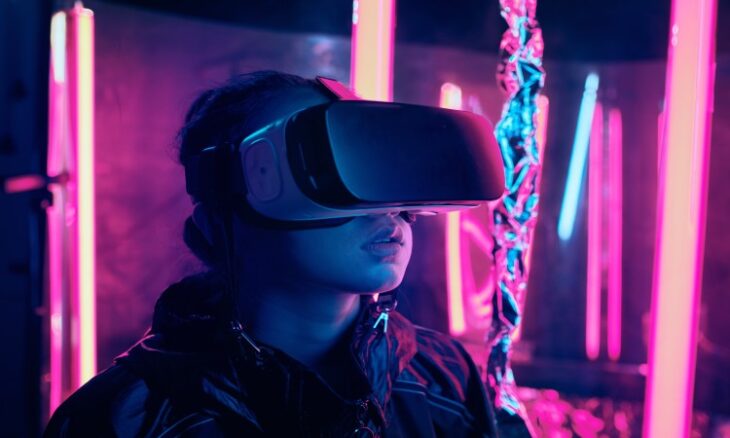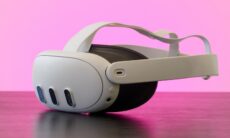Vivo launches Vision Discovery Edition headset
Vivo has stepped into the mixed-reality market with the unveiling of its Vision Discovery Edition headset, a move that signals the company’s ambition to rival technology giants such as Apple, Meta, and Samsung. The debut was made at Vivo’s 30th anniversary event in Dongguan, a city recognised as a key manufacturing hub in China and located close to Shenzhen, often described as the country’s Silicon Valley.
The Vision Discovery Edition has been positioned as Vivo’s first mixed-reality device, combining augmented reality and virtual reality to blur the boundaries between digital and physical environments. At first glance, the headset appears strikingly similar to Apple’s Vision Pro, though it has been designed with practicality in mind. Weighing only 398 grams, with a height of 83 millimetres and a thickness of 40 millimetres, the device is notably lighter and more compact than many of its competitors. Vivo has claimed it is around 26 per cent smaller than the current industry average. The materials used in its construction include metal, glass, plastic, and fabric, ensuring both durability and comfort.
Eye-tracking technology has been integrated into the headset, enabling users to control functions simply by looking at an option and using finger taps. MicroOLED displays provide a dense pixel structure and sharp resolution, while the device supports the recording of 3D videos and the capture of spatial photographs. Compatibility, however, depends on pairing with selected Vivo smartphones. The company has reportedly invested four years into research and development, involving more than 1,800 components, and compared the assembly process to that of a personal computer. For now, Vivo does not intend to launch the product immediately, instead seeking consumer and developer feedback by creating demo zones across a number of Chinese cities.
The Vision Discovery Edition introduces gesture-based controls and incorporates cameras on the outer lenses, alongside a digital crown to manage scrolling and adjust transparency levels. To improve wearability, it comes with four light seal sizes and eight foam padding options, designed to keep users comfortable during extended sessions. With support for immersive content consumption, the headset is powered by Qualcomm’s Snapdragon XR2+ Gen 2 platform and runs on Vivo’s OriginOS, a proprietary operating system crafted specifically for the device. One of its features allows users to watch films with a screen that can appear as wide as 120 feet.
Despite its technological promise, the market for extended reality remains a challenging environment. Apple’s Vision Pro, launched at a premium price of $3,500, is widely regarded as sophisticated yet far from a mass-market product. Analysts have pointed out that while smartphone makers are keen to explore fresh revenue streams, adoption of spatial computing devices has not advanced as quickly as anticipated. For Vivo, the introduction of the headset may enhance its brand recognition, but expectations regarding large-scale sales remain modest at this stage.
The headset relies on an external battery pack roughly the size of a mobile phone, capable of powering the device for around two hours. Future success is likely to hinge on improvements in areas such as battery performance, display technology, and cost efficiency, along with the creation of compelling applications that extend beyond games or simple productivity tools. Integration with existing smartphones and computers is also considered crucial, particularly as technology firms continue to promote the concept of device ecosystems.
Market observers have noted that Vivo’s expansion into premium technology segments is a logical progression following its success in smartphone markets across Asia, including India and Southeast Asia. Some analysts believe that if Vivo positions the Vision Discovery Edition at a more accessible price than Apple’s Vision Pro, the company could gain a competitive edge. Comparisons have even been drawn to Xiaomi’s strategy of using key product launches to support wider business growth.
The mixed-reality sector is evolving quickly, with rival companies pressing ahead with their own developments. Meta is working on its Quest 4 goggles and a potential successor to the Quest Pro, while Google has created Android XR, which is expected to underpin future Samsung devices. Apple, meanwhile, is believed to be preparing both a successor to the Vision Pro and a more affordable version, though neither is expected in the immediate future.
Looking further ahead, several companies, including Meta, Snap, and Google, are concentrating on augmented reality glasses. These aim to deliver headset-like capabilities without the bulk, potentially reshaping the way people interact with digital content. Demonstrations of such glasses already highlight the possibility of overlaying digital features seamlessly onto the real world, fuelling speculation that one day they might even replace smartphones. In the meantime, simpler smart glasses, like Meta’s Ray-Ban collaboration, have gained popularity by offering functions such as video recording and call handling without the need for integrated displays.










